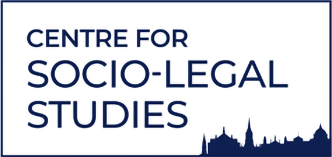
In Search of Progressive Lawyers

Lawyers, Networks and Progressive Social Change: Lawyers Changing Lives revisits questions about the motivations and actions of lawyers labelled here as ‘progressive’. It focuses on questions of identity, methods, tools, ethics, and the future of progressive lawyering in England. Although the author suggests the field is a ‘sociological vacuum’ (p.112), Sarat and Scheingold’s collections of essays on cause lawyers cover much of the same territory. Kinghan distinguishes this work by arguing that the term ‘progressive’ refers to left leaning lawyers seeking social advancement (p.59), whereas ‘cause lawyers’ might be left or right-wing. The proposition examined is that a ‘progressive lawyering movement exists in the UK’ (p.168), an idea examined by a mixed study of lawyers identified by the author as ‘progressive’.
Progressive lawyers are identified in one of five ‘areas of practice’: Barrister-Campaigner, Legal Aid Lawyer, Charity/NGO Lawyer, Law Centre Lawyer, and Law Clinic Lawyer (p.49). Work in a law clinic, the UCL Centre for Access to Justice, makes the author ‘a participant in the research by virtue of my own experience’ (p.44) and the book is billed as both an ethnography and a qualitative study based on participants’ ‘narratives’, autobiographical detail derived from 35 lawyers ‘on the left of the political spectrum’ (p.2), supplemented by encounters with lawyers and students through clinical work. The themes are richly illustrated with interview excerpts.
The key finding is that participants ‘collectively frame who they are and motivations for what they do’ and conceived themselves to be part of a wider movement (p.170). They co-operated across work sites and met in left-wing organisations like the Haldane Society or Legal Aid Practitioners Group. This was said to satisfy Diani’s concept of a network; a social movement comprising informal interaction, shared beliefs and solidarity, and collective action on conflictual issues. Their ‘shared beliefs and commitments’ included money never being offered as a motivating factor for doing the work, anger at injustice, a desire to make a ‘social contribution’ representing the vulnerable or disadvantaged, and enhancing access to justice (p.82).
Having found that progressive lawyers share a common identity the book considers issues such as ethical perspectives and decision making. It argues that providing more widespread clinical legal education would enable more students to enter progressive practice with their eyes open to the challenges facing them. This might reduce the loss of practitioners disillusioned by declining legal aid funding and facing lawyer burnout. A chapter on ethics considers how lawyers negotiate the conduct of their practice against a backdrop of professional expectations of neutrality and independence.
By way of critique, two issues regarding methodology concern the selection of participants. The first is that the network was based on a relatively small number of existing contacts, ‘naturally occurring conversations’, and additional participants selected for the ‘professional accolades’ they received (p.56-7). This might enhance a researcher’s perception of a network. Even so, participants’ accounts often suggested strong primary identification with existing professional organisations, barristers with the radical Bar or radical chambers, and solicitors with their radical firm (p.83).
The second issue is that exclusion of some practice sites narrows the range of possible findings. Pro bono lawyers in corporate law firms, apparently, were not included because they had not forgone lucrative careers to work in the designated ‘progressive’ sites (p.170). Their firms’ pro bono departments were not seats of cause lawyering, ‘except for limited exceptions’ (p.14). The exception cited, 19 Supreme Court interventions Freshfields made in conjunction with charities, was picked up from a Gazette report on their Law Society pro bono excellence award, but the possibility of other examples was not explored. The number seems impressive, but similar interventions made by participants in the study are not given.
At the theoretical level, Hilbink’s tripartite classification of cause lawyer motivation is adopted: proceduralist (upholding the rule of law), elite/vanguard lawyering (using litigation to change society and ‘moving change up’ through politics) and grassroots (working with communities). The author states that the proceduralist motivation is ‘closest to the traditional notion of the lawyer’ (p.26) and that progressive lawyers are different from ‘other’ lawyers because they oppose ‘the potential overreach of state power’ (p.75). The fact that representing the citizen against the state is intrinsic to the legal role illustrates the problem for researchers. Differences between lawyers identified as radical, cause or progressive can be difficult to discern. It is, however, interesting to explore possible distinctions. This book brings a new perspective to that task.

